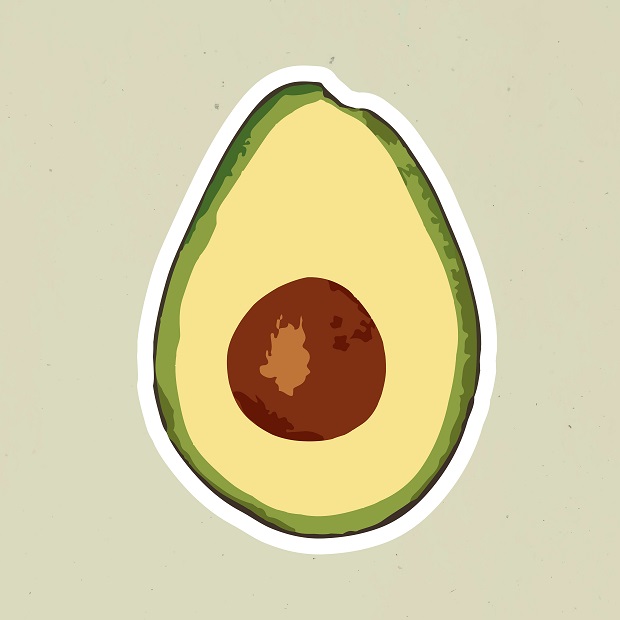Best Crop to Grow for the Most Profit in Kenya

Agriculture in Kenya isn’t just about food security anymore—it’s quickly becoming one of the most reliable paths to wealth creation. With the right crop, smart management, and solid market access, farming can turn into a serious business that delivers annual profits in the millions. But not all crops are created equal.
This article dives into a detailed profitability analysis of Kenya’s top ten crops, comparing their gross income potential per acre based on actual yield figures and current market rates. Whether you’re an aspiring agripreneur or a seasoned farmer seeking more lucrative ventures, this guide gives you the clarity you need to choose the right crop for your land and investment level.
Why Profitability Matters in Crop Selection
Before getting your hands dirty, you need a clear picture of what your chosen crop will actually earn you. Profitability per acre isn’t just a number—it reflects a crop’s market demand, yield efficiency, and resilience to pests, drought, and price swings. It’s the difference between running a struggling farm and building a thriving agribusiness.
We evaluated ten major crops—ranging from cash crops like coffee and avocados to fast-moving vegetables like tomatoes and onions. Each is assessed based on:
- Yield per acre
- Market prices (as of 2025)
- Gross income potential
- Scalability and sustainability
- Market access and export viability
1. Coffee – The Long-Term Goldmine
- Trees per acre: 1,000
- Yield per tree: 15 kg
- Total yield: 15,000 kg (15 tons)
- Price per kg: Ksh 128
- Gross income per acre: Ksh 1,919,424
Why It Pays:
Kenya’s premium coffee is world-renowned, and Ruiru 11 stands out for its high yield and disease resistance. Although coffee takes 2–3 years to mature, its export value is unmatched. Specialty coffee markets in the US, Europe, and Asia offer premium prices for quality beans.
Market Access:
You can sell via cooperatives, directly through the Nairobi Coffee Exchange, or through private exporters. Going into value addition—like roasting and packaging—further boosts margins.
Bottom Line: For long-term investors, coffee is a heavyweight in profitability. It requires patience, care, and agronomic discipline—but the returns are worth it.
2. Avocados (Hass Variety) – Kenya’s Green Gold
- Trees per acre: 100–115
- Fruits per tree (Year 5): 500
- Price per fruit: Ksh 20
- Gross income per acre: Ksh 1,150,000
Why It Pays:
Avocados—especially the Hass variety—are in high demand globally. Kenya’s climate is ideal, and the export market is booming. From year 3 onward, trees begin to produce, and by year 5, income stabilizes.
Market Access:
Exporters like Kakuzi, Selina Wamucii, and Vegpro offer strong linkages. Farmers must adhere to export protocols like GlobalG.A.P. certification for access to Europe and Middle East markets.
Bottom Line: With moderate inputs and high returns, avocados offer an excellent ROI. Intercropping early with legumes or vegetables helps generate income while trees mature.
3. Bananas (Tissue-Cultured) – Reliable, Year-Round Income
- Plants per acre: 400
- Bunches per stool annually: 5
- Price per bunch: Ksh 500
- Gross income per acre: Ksh 1,000,000
Why It Pays:
Bananas produce throughout the year and offer steady income. Tissue-cultured plants deliver uniform yields and are less disease-prone.
Market Access:
Bananas are a staple in households and institutions. Value-added products like banana crisps and flour are opening new income channels.
Bottom Line: Perfect for farms with access to water. Bananas offer predictable revenue with minimal idle seasons—ideal for family-run or commercial farms alike.
4. Tomatoes – High Profit, High Maintenance
- Yield per acre: 25 tons
- Price per kg: Ksh 20
- Gross income per acre: Ksh 500,000
Why It Pays:
Tomatoes fetch good prices almost year-round. They’re in demand in households, hotels, and processing industries.
Market Access:
Traders, processors, supermarkets, and even exports take tomatoes in bulk. Greenhouse-grown tomatoes fetch better prices due to consistent quality.
Bottom Line: Fast money if you manage pests, diseases, and water properly. High input, high output. Worth it if you’re ready for intensive care.
5. Onions – A Top-Performer Among Vegetables
- Yield per acre: 10 tons
- Price per kg: Ksh 50
- Gross income per acre: Ksh 500,000
Why It Pays:
Onions are versatile and in demand across the country. They store well and can be timed to avoid gluts.
Market Access:
Wholesalers and retailers buy in bulk. There’s rising demand for dried and processed onions locally and abroad.
Bottom Line: With good timing, irrigation, and disease control, onions consistently rank among the best short-term cash crops.
6. Tea – The Evergreen Exporter
- Bushes per acre: 4,000
- Yield per bush: 1.5 kg
- Price per kg: Ksh 70
- Gross income per acre: Ksh 420,000
Why It Pays:
Kenya is one of the world’s top tea exporters. Though setup is capital-intensive, tea provides stable, predictable income for decades.
Market Access:
Farmers sell to KTDA-managed or private factories. Specialty teas like purple and orthodox tea fetch even better returns.
Bottom Line: Long-term players in highland regions can build reliable passive income with tea. Add value, and margins skyrocket.
7. Cabbages – Seasonal Star, If Timed Right
- Pieces per acre: 16,000
- Price per piece: Ksh 15
- Gross income per acre: Ksh 240,000
Why It Pays:
Fast-growing and with relatively low input costs, cabbage can be very rewarding—if the market is right.
Market Access:
Highly demanded by schools, hospitals, and traders. Avoiding oversupply seasons is key.
Bottom Line: Time it right and you win big. Miss the timing, and you could be stuck with an oversupply and low prices.
8. Dry Beans – Quick Turnaround, Modest Returns
- Yield per acre: 1 ton
- Price per kg: Ksh 120
- Gross income per acre: Ksh 120,000
Why It Pays:
Beans mature in under 3 months, making them ideal for rotation and intercropping. They’re easy to grow and don’t need a lot of input.
Market Access:
Traded in local markets or through contracts with schools, NGOs, and buyers.
Bottom Line: Low-risk and great for rotation. Not a wealth-builder alone, but part of a profitable mixed farming strategy.
9. Wheat – Mechanized but Margin-Thin
- Yield per acre: 20 bags
- Price per bag: Ksh 4,000
- Gross income per acre: Ksh 80,000
Why It Pays:
Wheat needs specific climates and large-scale production to be profitable. Ideal for mechanized commercial farming in regions like Narok and Eldoret.
Market Access:
Supplied to millers, bakeries, and institutions. Specialty wheat can fetch higher prices.
Bottom Line: Low return per acre unless done at scale. Best for investors with equipment and large tracts of land.
10. Maize – Staple Crop, Low Margins
- Yield per acre: 25 bags
- Price per bag: Ksh 3,000
- Gross income per acre: Ksh 75,000
Why It Pays:
Every household consumes maize, but the profit margins are slim. It’s vulnerable to pests, erratic rainfall, and price fluctuations.
Market Access:
Sold via brokers, millers, and NCPB. Strategic drying and storage can boost prices post-harvest.
Bottom Line: Useful for food security and rotation—not the crop to build wealth on unless farmed on 50+ acres with machinery.
Summary Table – Crop Profitability per Acre
| Crop | Gross Income (Ksh) | Notes |
|---|---|---|
| Coffee | 1,919,424 | High export value, needs patience |
| Avocados | 1,150,000 | Great ROI, long-term |
| Bananas | 1,000,000 | Year-round cash flow |
| Tomatoes | 500,000 | High input, high profit |
| Onions | 500,000 | Steady market, timing crucial |
| Tea | 420,000 | Evergreen earner, needs altitude |
| Cabbages | 240,000 | Volatile market, short-term |
| Dry Beans | 120,000 | Quick cash, rotation-friendly |
| Wheat | 80,000 | Large-scale or bust |
| Maize | 75,000 | Staple, best in bulk |
Key Takeaways for Agro-Investors
Profit potential in farming is real—but success hinges on more than picking a high-value crop. You must align your choice with:
- Land suitability (climate, soil type)
- Access to water
- Labour availability
- Market proximity or export channels
- Pest and disease control plans
Top Profit Picks:
- For long-term, high income: Coffee, Avocados, Bananas
- For fast returns: Tomatoes, Onions
- For stable background income: Tea, Beans
Final Word: Farming As a Business
Kenya’s agriculture sector is ripe for transformation—and profit. But to succeed, you must treat farming like a business. That means planning, budgeting, analyzing data, and sticking to the best agronomic practices. With the right crop and strategy, even a single acre can outperform traditional urban investments.
Choose wisely. Plan well. Grow smart. The land will reward you.

Discover more from Graduate Farmer
Subscribe to get the latest posts sent to your email.







